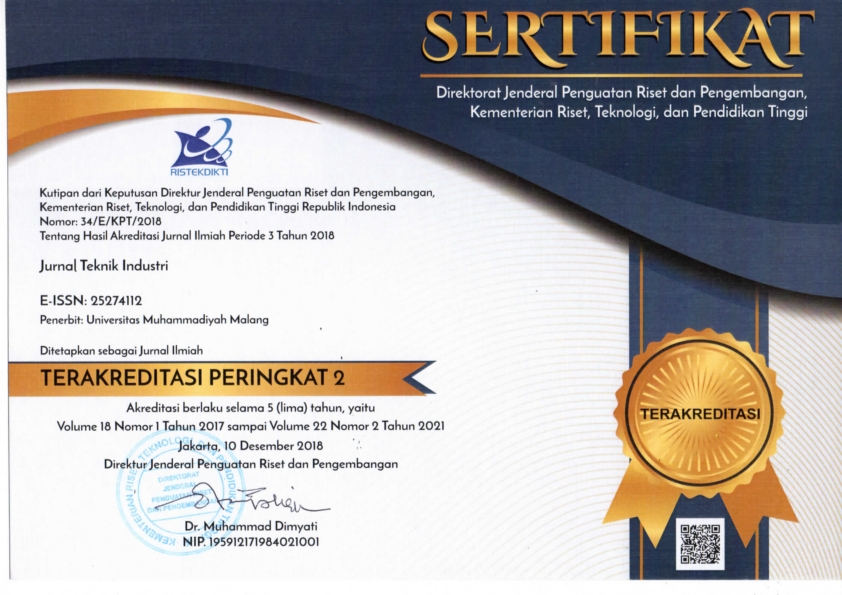Optimalisasi Proses Gerinda Untuk Permukaan
DOI:
https://doi.org/10.22219/JTIUMM.Vol11.No1.26-30Keywords:
surface grinding, grinding temperature, and surface roughnessAbstract
Basically, surface grinding is mechanical process that result high temperature and chemical reaction on surface work piece. On this process, the heat energy has been released along of the surface. A part of the energy would be transferred to chip and the other would be continued to the environment by grinder and work piece. Use of coolant on the surface of the object will be function as lubricant, which can reduce friction between grinder and the object. Moreover, in grinding process, cooling can effect on temperature and surface roughness. This research used factorial design 2x3x3 to evaluate the effect some variables process such as table speed, depth of cut also cooling method on temperature and surface roughness. High pressure air and air in room temperature are kinds of cooling method in the process, the result of experiment would be analysis by ANAVA. The experiment shows that temperature in air cooling method it is lowerthan by air of room temperature cooling method. The surface roughness of the work piece in air cooling method is the lowest. The faster table speed of grinding machine caused that the lower of the grinding temperature and the work piece surface roughness. Moreover, the higher depth of cut would cause the higher grinding temperature and surface roughness.
Downloads
Download data is not yet available.
Downloads
Published
02/18/2012
How to Cite
Sakti, A. M. (2012). Optimalisasi Proses Gerinda Untuk Permukaan. Jurnal Teknik Industri, 11(1), 26–30. https://doi.org/10.22219/JTIUMM.Vol11.No1.26-30
Issue
Section
Article











